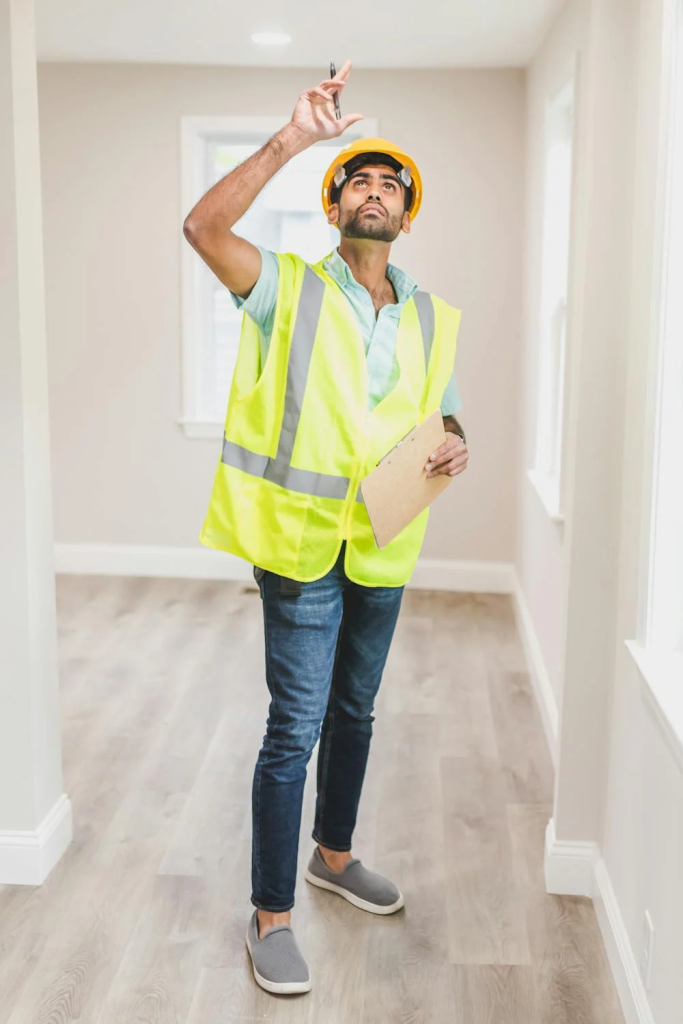Building inspectors play a critical role in ensuring that the safety, functionality, and integrity of structures comply with local, state, and national building codes and regulations. In Australia, their work is essential for protecting public health, safety, and welfare by ensuring that building projects meet legal and technical requirements.

A building inspector is tasked with overseeing a variety of elements throughout the construction process, from design to completion, to guarantee that everything is up to code.
Click All Build Inspect For More Details
Top Priorities Of A Building Inspector
Compliance With Building Codes And Standards
One of the most important priorities of a building inspector is ensuring that all construction work complies with the relevant building codes and standards. In Australia, the National Construction Code (NCC) is the primary set of regulations that governs the design and construction of buildings.
These codes address structural integrity, fire safety, energy efficiency, and other critical components. Inspectors must ensure that all aspects of a building meet these standards to reduce the risk of hazards and ensure long-term durability.
Building inspectors need to have a thorough knowledge of the NCC and other state and local regulations that may apply. They will review construction plans, assess building materials, and monitor the actual building process to ensure the construction conforms to the approved plans and regulatory standards. Non-compliance with these codes can lead to fines, delays, and even the need to redo work that is not up to standard.
Safety During Construction And Post-Construction
Safety is paramount in the construction industry, and building inspectors play a critical role in overseeing safe practices during the construction process. Inspectors check that construction sites follow workplace safety protocols, ensuring that workers use proper personal protective equipment (PPE) and that the site is free from hazards that could pose risks.
In addition to ensuring the safety of construction workers, building inspectors are responsible for considering future occupants’ safety. This includes verifying that the building is structurally sound, equipped with proper fire exits, has compliant electrical wiring, and meets the necessary safety standards for things like lifts and stairwells.
For instance, if an inspector notices a structural issue or a hazard that could affect the integrity of the building, it is their duty to intervene before construction can continue.
Structural Integrity And Quality Control
Another top priority for building inspectors is ensuring that the structure of the building is sound and built to last. This includes inspecting the foundation, framing, load-bearing walls, and other key components that contribute to the overall stability of the building.
Inspectors will often examine construction sites at multiple stages, such as before the foundation is poured, after framing, and at the final inspection, to verify that the building is being constructed correctly.Inspectors also evaluate the quality of materials being used. For example, they may examine whether the steel, concrete, or timber used in construction meets the specified standards for strength and durability. Any issues with the materials or methods used could result in safety concerns, so inspectors are meticulous in checking for any signs of potential failure or defect in the structure.
Energy Efficiency And Environmental Impact
Sustainability is becoming increasingly important in building projects, and inspectors must ensure that buildings meet the required energy efficiency standards. Australia’s commitment to reducing its environmental impact is reflected in building regulations such as the Section J requirements of the NCC, which govern energy efficiency for commercial buildings, and Six-Star Green Star ratings for residential and commercial properties.
Building inspectors are responsible for ensuring that buildings are designed and constructed to reduce energy consumption and minimise their environmental footprint.
Inspectors may assess the installation of insulation, energy-efficient windows, solar panels, and other elements that improve the building’s energy performance. They also check whether the building incorporates sustainable materials and practices, such as water conservation systems or eco-friendly building materials. For new constructions, inspectors ensure that the design allows for the appropriate amount of natural light and ventilation, which reduces the reliance on artificial lighting and heating.
Fire Safety
Fire safety is a major concern for building inspectors. In Australia, building regulations place a high emphasis on ensuring that buildings are designed to prevent fire hazards and protect occupants in the event of a fire. Inspectors carefully review building plans to ensure that fire-resistant materials are used where necessary, fire exits are correctly located and accessible, and fire alarms, sprinklers, and extinguishers are in place.
At construction sites, building inspectors verify that fire safety measures are being implemented according to plan. They inspect the installation of fire-rated doors, fire barriers, and other fire prevention features. The inspector also checks to ensure that emergency evacuation routes are properly designed and clearly marked, which is crucial for the safety of the occupants during an emergency.
Plumbing And Electrical Inspections
Proper installation of plumbing and electrical systems is essential to the function and safety of any building. Building inspectors are tasked with ensuring that these systems comply with relevant codes and are installed correctly. They check for proper wiring and plumbing installation to prevent issues like electrical fires or water leaks. This is particularly important when dealing with systems that require specific compliance, such as gas lines, drainage, and sewerage systems.
For electrical systems, inspectors look for the correct placement of outlets, switches, and circuit breakers. They ensure that all wiring is properly installed and protected, with no exposed or dangerous connections. Plumbing inspections include checking water pipes, waste disposal systems, and gas lines for any possible hazards or weaknesses. Inspectors may also assess the installation of water-saving devices, like low-flow faucets and toilets, to ensure they are in line with sustainability guidelines.
Accessibility For All Occupants
Ensuring that buildings are accessible to people with disabilities is another important priority for building inspectors. Australian regulations require that new buildings be designed to accommodate people with mobility challenges. This includes making sure that entrances, hallways, bathrooms, and other essential areas are accessible to people who use wheelchairs or other mobility devices.
Inspectors check that the building has the necessary ramps, elevators, wide doorways, and other accessible features. They verify that the building’s design complies with the Disability Discrimination Act (DDA) and that the required provisions, such as accessible toilets and parking spaces, are properly implemented. Ensuring accessibility is not just a legal requirement; it also promotes inclusivity, making buildings safe and usable for all individuals, regardless of physical ability.
Inspection Of Structural Defects And Remediation
Sometimes, building inspectors are called upon to assess existing structures for signs of wear and tear or structural defects. This can occur during the buying and selling of properties or when a building is undergoing major renovations or repairs. In these cases, the inspector looks for structural issues such as cracks, subsidence, or deterioration of materials. These defects can compromise the safety and value of the property.
Inspectors are responsible for identifying potential hazards, documenting the defects, and providing recommendations for remediation. This might involve repairing cracks in foundations, reinforcing walls, or replacing defective materials. In some cases, inspectors may need to coordinate with structural engineers or other specialists to assess the extent of the damage and the appropriate measures needed to correct it.
Documentation And Reporting
Documentation is a key priority for building inspectors. They are responsible for maintaining thorough records of all inspections, findings, and actions taken during the inspection process. A detailed report is often required to provide an accurate account of the construction process and ensure compliance with legal requirements.
Reports typically include photographs, written descriptions of any issues identified, and recommendations for remediation or correction. These reports are used not only to inform the building owner or contractor but also serve as legal documents if any issues arise later, such as disputes about compliance or safety.
Customer Interaction And Education
While building inspectors are primarily focused on ensuring compliance with the regulations, they must also interact with clients, including builders, contractors, and property owners. Inspectors are often tasked with explaining the results of their inspections, answering questions, and offering advice on how to address any issues.
Building inspectors help their clients understand why certain standards are necessary and provide guidance on how to meet them.
Good communication skills are essential for building inspectors to foster positive relationships with clients and ensure smooth, efficient inspections. Their role as educators in the construction process can prevent costly mistakes and promote a deeper understanding of building requirements and regulations.
Conclusion
Building inspectors in Australia are entrusted with a significant responsibility to ensure the safety, functionality, and regulatory compliance of buildings. Their priorities range from maintaining structural integrity to promoting energy efficiency and fire safety.
As construction projects become more complex, building inspectors must continue to stay informed about evolving building codes, technologies, and sustainability practices. They also play a crucial role in educating the construction industry about safety and legal requirements, ultimately contributing to the safety and well-being of the public.
Frequently Ask Question
What Role Do Building Inspectors Play In Ensuring Accessibility In Construction?
Building inspectors ensure that a construction project complies with accessibility standards, making sure that the building is safe and accessible for people with disabilities. This includes checking for features like ramps, wider doorways, accessible toilets, and signage that guides people with mobility challenges. Inspectors ensure that all public spaces are accessible, in line with Australian Disability Discrimination Act requirements. They also verify that lifts and other assistive technologies are installed correctly.
What Qualifications Do Building Inspectors Need In Australia?
In Australia, building inspectors must meet certain qualifications, which typically include a certification in building and construction, such as a Diploma in Building and Construction or a related field. Some states and territories also require specific licensing or registration. Inspectors often need to have practical experience in construction or building design, as well as knowledge of local building codes and regulations. Continued professional development is often necessary to keep up-to-date with changes in building laws and technologies.
How Do Building Inspectors Prepare Reports After Inspections?
After an inspection, building inspectors prepare detailed reports documenting their findings. These reports highlight any violations, defects, or safety concerns, and they often include photographs to support their observations. The report may recommend corrective actions or repairs to ensure compliance with building codes and safety regulations. Inspectors submit these reports to builders, contractors, or relevant authorities, helping to inform decision-making and project progression. The reports are essential for maintaining transparency and accountability throughout the construction process.
